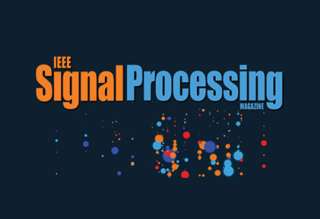SPS Feed
Top Reasons to Join SPS Today!
1. IEEE Signal Processing Magazine
2. Signal Processing Digital Library*
3. Inside Signal Processing Newsletter
4. SPS Resource Center
5. Career advancement & recognition
6. Discounts on conferences and publications
7. Professional networking
8. Communities for students, young professionals, and women
9. Volunteer opportunities
10. Coming soon! PDH/CEU credits
Click here to learn more.
The Latest News, Articles, and Events in Signal Processing
Date: 11 November 2024
Chapter: Croatia Chapter
Chapter Chair: Tomislav Petkovic
Title: Deep Generative AI
Date: 6 August 2024
Time: 1:00 PM ET (New York Time)
Presenter(s): Dr. Shinji Watanabe, Dr. Abdelrahman Mohamed
Dr. Karen Livescu, Dr. Hung-yi Lee, Dr. Tara Sainath,
Dr. Katrin Kirchhoff & Dr. Shang-Wen Li
Manuscript Due: 9 February 2025
Publication Date: September 2025
Date: 3 July 2024
Time: 10:00 AM ET (New York Time)
Speaker(s): Prof. (Kit) Kai-Kit Wong
White Paper Due: 1 November 2024
Publication: November 2025
Date: 2 July 2024
Chapter: Slovenia Chapter
Chapter Chair: Andrej Trost
Title: Biasness & Fairness, Worth Considering in AI
Date: 10 July 2024
Time: 10:00 AM ET (New York Time)
Speaker(s): Prof. A. Chockalingam
Motion artifact reduction is one of the important research topics in MR imaging, as the motion artifact degrades image quality and makes diagnosis difficult. Recently, many deep learning approaches have been studied for motion artifact reduction. Unfortunately, most existing models are trained in a supervised manner, requiring paired motion-corrupted and motion-free images, or are based on a strict motion-corruption model, which limits their use for real-world situations.
Accurately imaging bones using ultrasound has been a long-standing challenge, primarily due to the high attenuation, significant acoustic impedance contrast at cortical boundaries, and the unknown distribution of sound velocity. Furthermore, two-dimensional (2-D) ultrasound bone imaging has limitations in diagnosing osteoporosis from a morphological perspective, as it lacks stereoscopic spatial information.

The Signal Processing Research Centre of Tampere University is looking for a tenure track-professor (assistant/associate/full) to join its team of world-class experts. Please see the full description and apply here.
Date: 17 July 2024
Chapter: Kansai Chapter
Chapter Chair: Satoshi Nakamura
Title: Interpretable Convolutional NNs and Graph CNNs: Role of Domain Knowledge
Date: 16 July 2024
Chapter: Sendai Chapter
Chapter Chair: Yukio Iwaya
Title: Machine Intelligence for eHealth: Hearables for 24/7 Doctorless Hospitals?
Pages
SPS Social Media
- IEEE SPS Facebook Page https://www.facebook.com/ieeeSPS
- IEEE SPS X Page https://x.com/IEEEsps
- IEEE SPS Instagram Page https://www.instagram.com/ieeesps/?hl=en
- IEEE SPS LinkedIn Page https://www.linkedin.com/company/ieeesps/
- IEEE SPS YouTube Channel https://www.youtube.com/ieeeSPS





















